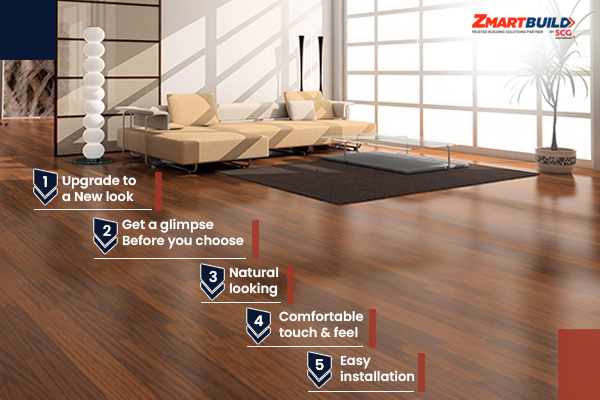When pitted against other popular flooring options, ZMARTBUILD SPC Flooring emerges as a frontrunner.
Its long lifespan combined with minimal maintenance requirements makes it a cost-effective choice. And its insulating properties can even contribute to reduced energy bills.
Let us know more..
ZMARTBUILD SPC Flooring & Its Insulating Properties
Composition: SPC flooring is made from a blend of limestone and stabilisers. This combination results in a dense material that inherently has insulating properties. The nature of SPC means it can act as a barrier, retaining heat during colder months and preventing the upward movement of cold from the subfloor.
Thermal Resistance: In the context of flooring, the term ‘insulation’ often refers to a material’s ability to resist the transfer of heat. The dense core of ZMARTBUILD SPC flooring provides a level of thermal resistance, which can be beneficial in controlling the room’s temperature.
Impact on Energy Bills: Effective insulation, whether in walls, ceilings, or floors, can lead to energy savings. Here’s how:
Winter: A floor that insulates well can help retain the warmth generated by heating systems, meaning the heating system doesn’t have to work as hard or as frequently to maintain a comfortable temperature. This can lead to less energy consumption and, by extension, reduced heating bills.
Summer: While the primary concern in warmer months isn’t heat retention, a well-insulated floor can still help maintain cooler indoor temperatures by resisting the upward transfer of heat from the ground or lower floors, especially in multi-story buildings.
Complementary Underlayment: While ZMARTBUILD SPC alone offers insulating benefits, these can be amplified when combined with insulating underlayment products. These underlayments can further prevent temperature fluctuations and improve energy efficiency.
In essence, while ZMARTBUILD SPC flooring isn’t a primary insulation solution like wall or ceiling insulation, it does contribute to the overall thermal efficiency of a space. Over time, this can lead to tangible energy savings, making the flooring not just a design choice, but also an eco-friendly, cost-saving one.



